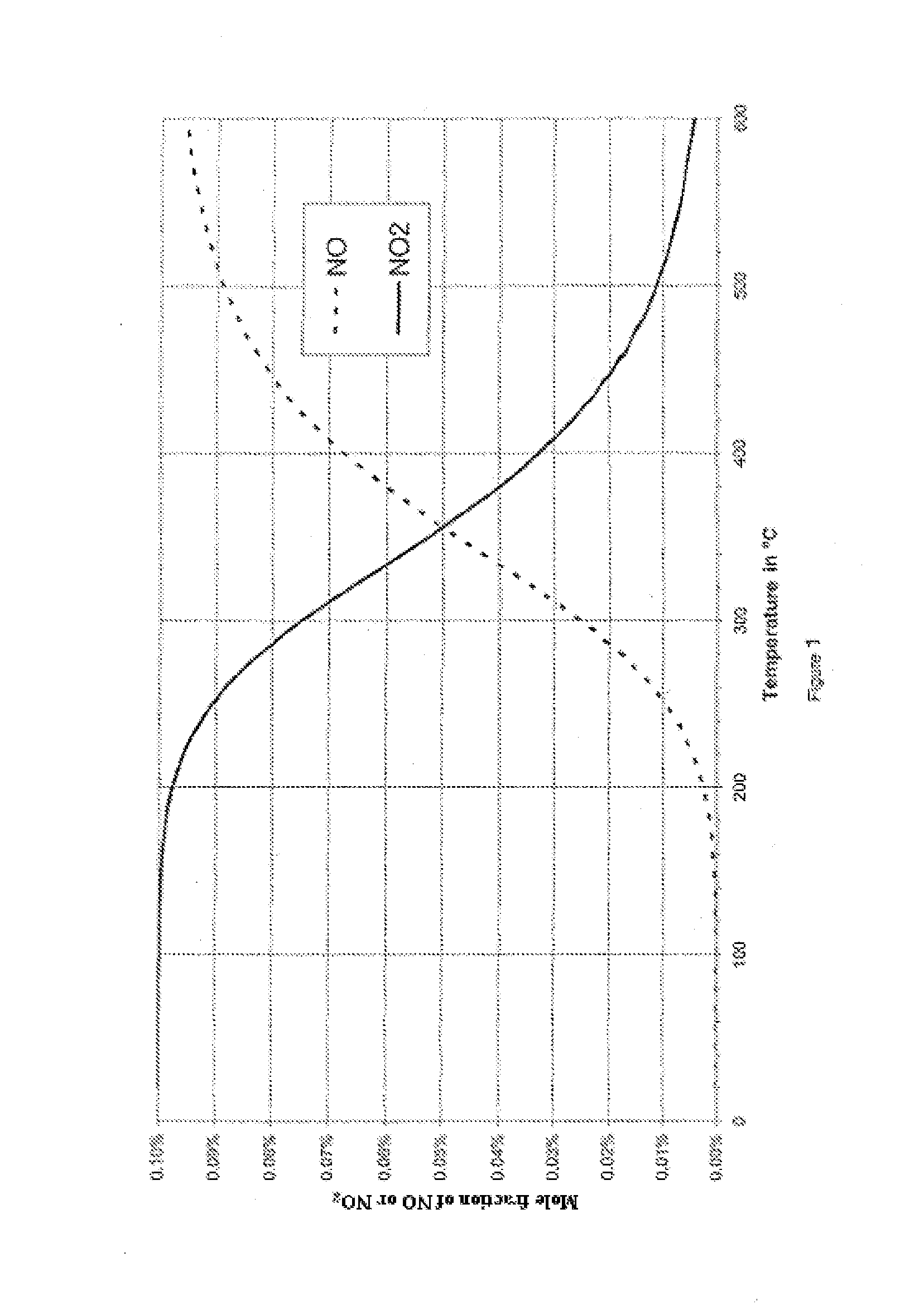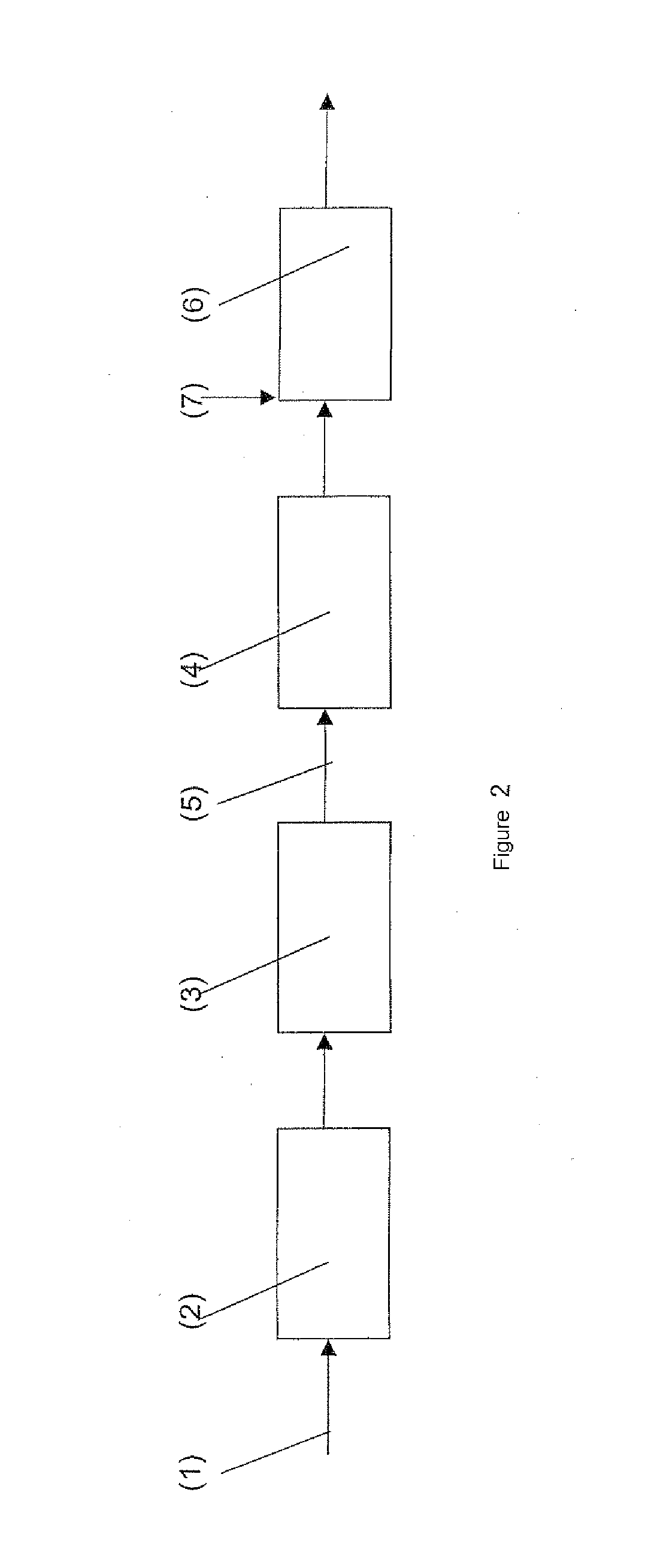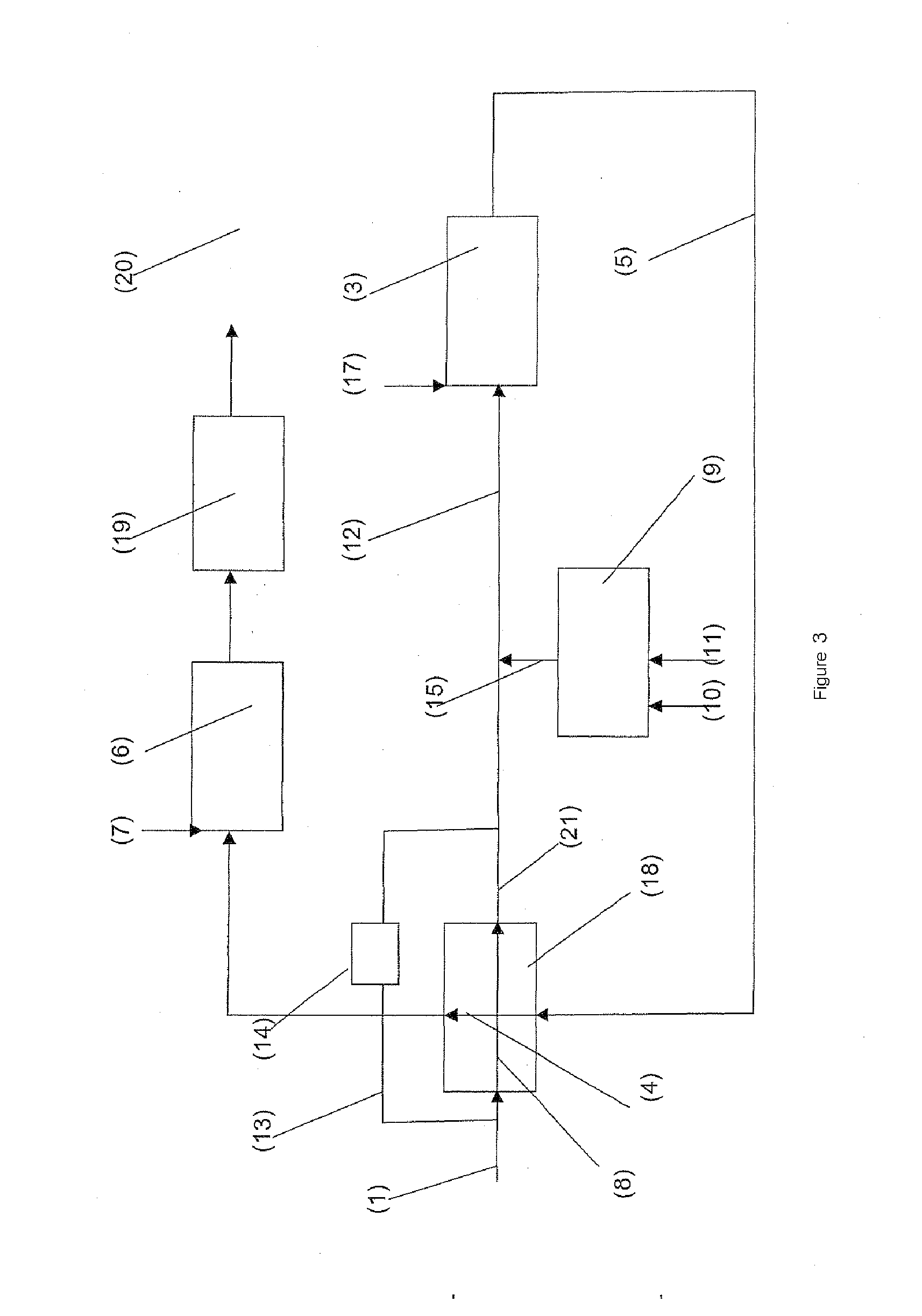Process and Apparatus for Eliminating NOx and N2O
- Summary
- Abstract
- Description
- Claims
- Application Information
AI Technical Summary
Benefits of technology
Problems solved by technology
Method used
Image
Examples
Embodiment Construction
[0100]The inventive system will be explained in detail by way of example hereinafter with reference to two figures, without any intention of a restriction thereby. The figures show:
[0101]FIG. 2: an outline of the process according to the invention and of the plant for reducing the content of NOx and N2O in gases, such as process gases or offgases;
[0102]FIG. 3: a preferred variant of the process according to the invention and of the inventive plant.
[0103]FIG. 2 shows an outline of the process according to the invention / of the apparatus according to the invention. What is shown is an apparatus (2) for adjusting the water content of the gas (1) comprising NOx and N2O. The water-laden offgas then enters a deN2O stage (3) which comprises an iron-laden zeolite catalyst. After passing through the deN2O stage (3), the gas stream (5) is passed through a cooling apparatus (4) and then enters a deNOx stage (6), and subsequently leaves the inventive cleaning plant. At the start of the deNOx sta...
PUM
| Property | Measurement | Unit |
|---|---|---|
| Temperature | aaaaa | aaaaa |
| Temperature | aaaaa | aaaaa |
| Fraction | aaaaa | aaaaa |
Abstract
Description
Claims
Application Information
 Login to View More
Login to View More - R&D
- Intellectual Property
- Life Sciences
- Materials
- Tech Scout
- Unparalleled Data Quality
- Higher Quality Content
- 60% Fewer Hallucinations
Browse by: Latest US Patents, China's latest patents, Technical Efficacy Thesaurus, Application Domain, Technology Topic, Popular Technical Reports.
© 2025 PatSnap. All rights reserved.Legal|Privacy policy|Modern Slavery Act Transparency Statement|Sitemap|About US| Contact US: help@patsnap.com



